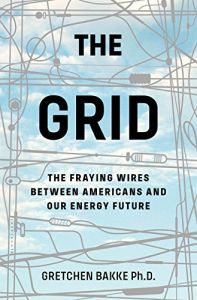Join getAbstract to access the summary!

Join getAbstract to access the summary!
Gretchen Bakke
The Grid
The Fraying Wires Between Americans and Our Energy Future
Bloomsbury USA, 2016
What's inside?
As its electrical grid ages, the United States suffers more power outages than any other developed nation.
Recommendation
Cultural anthropologist Gretchen Bakke explains that the United States leads the developed world in power outages due to the unreliability of its grid – the complex nationwide system of making and delivering electricity. Bakke describes the development of the flawed US grid and outlines its challenges. For example, she explains, since the power industry has no effective way to store electricity, its generation and consumption always occur simultaneously. You might wish Bakke had told you more about how America could improve the grid’s resiliency in the future, but she covers a lot of ground even so. getAbstract recommends her book to investors, policy makers and entrepreneurs who want to learn what is wrong with the US electrical infrastructure and why.
Summary
About the Author
Cultural anthropologist Gretchen Bakke, PhD, spent the first half of her career doing research on failing nations and the second half investigating failing infrastructure.



















Comment on this summary